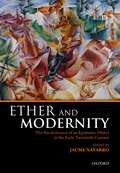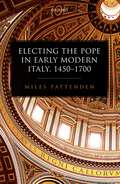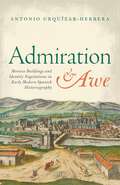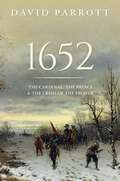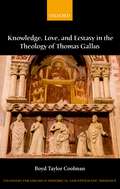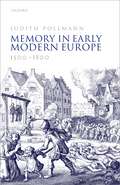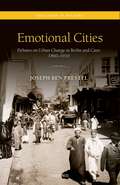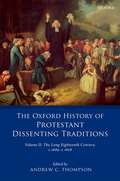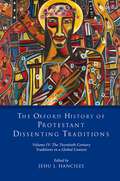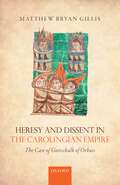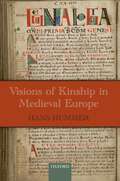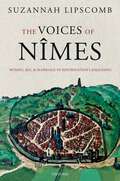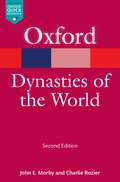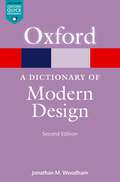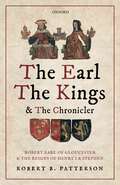- Table View
- List View
Ether and Modernity: The recalcitrance of an epistemic object in the early twentieth century
Ether and Modernity offers a snapshot of the status of an epistemic object, the "ether" (or "aether"), in the early twentieth century. The contributed papers show that the ether was often regarded as one of the objects of modernity, hand in hand with the electron, radioactivity or X-rays, and not simply as the stubborn residue of an old-fashioned, long-discarded science. The prestige and authority of scientists and popularisers like Oliver Lodge and Arthur Eddington in Britain, Phillip Lenard in Germany or Dayton C. Miller in the USA was instrumental in the preservation, defence or even re-emergence of the ether in the 1920s. Moreover, the consolidation of wireless communications and radio broadcasting, indeed a very modern technology, brought the ether into audiences that would otherwise never have heard about such an esoteric entity. The ether also played a pivotal role among some artists in the early twentieth century: the values of modernism found in the complexities and contradictions of modern physics, such as wireless action or wave-particle puzzles, a fertile ground for the development of new artistic languages; in literature as much as in the pictorial and performing arts. Essays on the intellectual foundations of Umberto Boccioni's art, the linguistic techniques of Lodge, and Ernst Mach's considerations on aesthetics and physics witness to the imbricate relationship between the ether and modernism. Last but not least, the ether played a fundamental part in the resurgence of modern spiritualism in the aftermath of the Great War. This book examines the complex array of meanings, strategies and milieus that enabled the ether to remain an active part in scientific and cultural debates well into the 1930s, but not beyond. This portrait may be easily regarded as the swan song of an epistemic object that was soon to fade away as shown by Paul Dirac's unsuccessful attempt to resuscitate some kind of aether in 1951, with which this book finishes.
Ether and Modernity: The recalcitrance of an epistemic object in the early twentieth century
by Jaume NavarroEther and Modernity offers a snapshot of the status of an epistemic object, the "ether" (or "aether"), in the early twentieth century. The contributed papers show that the ether was often regarded as one of the objects of modernity, hand in hand with the electron, radioactivity or X-rays, and not simply as the stubborn residue of an old-fashioned, long-discarded science. The prestige and authority of scientists and popularisers like Oliver Lodge and Arthur Eddington in Britain, Phillip Lenard in Germany or Dayton C. Miller in the USA was instrumental in the preservation, defence or even re-emergence of the ether in the 1920s. Moreover, the consolidation of wireless communications and radio broadcasting, indeed a very modern technology, brought the ether into audiences that would otherwise never have heard about such an esoteric entity. The ether also played a pivotal role among some artists in the early twentieth century: the values of modernism found in the complexities and contradictions of modern physics, such as wireless action or wave-particle puzzles, a fertile ground for the development of new artistic languages; in literature as much as in the pictorial and performing arts. Essays on the intellectual foundations of Umberto Boccioni's art, the linguistic techniques of Lodge, and Ernst Mach's considerations on aesthetics and physics witness to the imbricate relationship between the ether and modernism. Last but not least, the ether played a fundamental part in the resurgence of modern spiritualism in the aftermath of the Great War. This book examines the complex array of meanings, strategies and milieus that enabled the ether to remain an active part in scientific and cultural debates well into the 1930s, but not beyond. This portrait may be easily regarded as the swan song of an epistemic object that was soon to fade away as shown by Paul Dirac's unsuccessful attempt to resuscitate some kind of aether in 1951, with which this book finishes.
Electing the Pope in Early Modern Italy, 1450-1700
by Miles PattendenElecting the Pope in Early Modern Italy, 1450-1700 offers a radical reassessment of the history of early modern papacy, constructed through the first major analytical treatment of papal elections in English. Papal elections, with their ceremonial pomp and high drama, are compelling theatre, but, until now, no one has analysed them on the basis of the problems they created for cardinals: how were they to agree rules and enforce them? How should they manage the interregnum? How did they decide for whom to vote? How was the new pope to assert himself over a group of men who, until just moments before, had been his equals and peers? This study traces how the cardinals' responses to these problems evolved over the period from Martin V's return to Rome in 1420 to Pius VI's departure from it in 1798, placing them in the context of the papacy's wider institutional developments. Miles Pattenden argues not only that the elective nature of the papal office was crucial to how papal history unfolded but also that the cardinals of the fifteenth to eighteenth centuries present us with a unique case study for observing the approaches to decision-making and problem-solving within an elite political group.
Electing the Pope in Early Modern Italy, 1450-1700
by Miles PattendenElecting the Pope in Early Modern Italy, 1450-1700 offers a radical reassessment of the history of early modern papacy, constructed through the first major analytical treatment of papal elections in English. Papal elections, with their ceremonial pomp and high drama, are compelling theatre, but, until now, no one has analysed them on the basis of the problems they created for cardinals: how were they to agree rules and enforce them? How should they manage the interregnum? How did they decide for whom to vote? How was the new pope to assert himself over a group of men who, until just moments before, had been his equals and peers? This study traces how the cardinals' responses to these problems evolved over the period from Martin V's return to Rome in 1420 to Pius VI's departure from it in 1798, placing them in the context of the papacy's wider institutional developments. Miles Pattenden argues not only that the elective nature of the papal office was crucial to how papal history unfolded but also that the cardinals of the fifteenth to eighteenth centuries present us with a unique case study for observing the approaches to decision-making and problem-solving within an elite political group.
Admiration and Awe: Morisco Buildings and Identity Negotiations in Early Modern Spanish Historiography
by Antonio Urquízar-HerreraThis book offers the first systematic analysis of the cultural and religious appropriation of Andalusian architecture by Spanish historians during the sixteenth and seventeenth centuries. To date this process of Christian appropriation has generally been discussed as a phenomenon of architectural hybridisation. However, this was a period in which the construction of a Spanish national identity became a key focus of historical discourse. As a result, cultural hybridity encountered partial opposition from those seeking to establish cultural and religious homogeneity. Spain's Islamic past became a major concern in this period and historical writing served as the site for a complex negotiation of identity. Historians and antiquarians used a range of strategies to re-appropriate the meaning of medieval Islamic heritage as befitted the new identity of Spain as a Catholic monarchy and empire. On the one hand, the monuments' Islamic origin was subjected to historical revisions and re-identified as Roman or Phoenician. On the other hand, religious forgeries were invented that staked claims for buildings and cities having been founded by Christians prior to the arrival of the Muslims in Spain. Islamic stones were used as core evidence in debates that shaped the early development of archaeology, and they also became the centre of a historical controversy about the origin of Spain as a nation as well as its ecclesiastical history.
Admiration and Awe: Morisco Buildings and Identity Negotiations in Early Modern Spanish Historiography
by Antonio Urquízar-HerreraThis book offers the first systematic analysis of the cultural and religious appropriation of Andalusian architecture by Spanish historians during the sixteenth and seventeenth centuries. To date this process of Christian appropriation has generally been discussed as a phenomenon of architectural hybridisation. However, this was a period in which the construction of a Spanish national identity became a key focus of historical discourse. As a result, cultural hybridity encountered partial opposition from those seeking to establish cultural and religious homogeneity. Spain's Islamic past became a major concern in this period and historical writing served as the site for a complex negotiation of identity. Historians and antiquarians used a range of strategies to re-appropriate the meaning of medieval Islamic heritage as befitted the new identity of Spain as a Catholic monarchy and empire. On the one hand, the monuments' Islamic origin was subjected to historical revisions and re-identified as Roman or Phoenician. On the other hand, religious forgeries were invented that staked claims for buildings and cities having been founded by Christians prior to the arrival of the Muslims in Spain. Islamic stones were used as core evidence in debates that shaped the early development of archaeology, and they also became the centre of a historical controversy about the origin of Spain as a nation as well as its ecclesiastical history.
1652: The Cardinal, the Prince, and the Crisis of the 'Fronde'
by David ParrottDavid Parrott's book offers a major re-evaluation of the last year of the Fronde - the political upheaval between 1648 and 1652 - in the making of seventeenth-century France. In late December 1651, Cardinal Mazarin defied the order for his perpetual banishment, and re-entered France at the head of an army. The political and military crisis that followed convulsed the nation, and revived the ebbing fortunes of a revolt led by the cousin of the young Louis XIV, the prince de Condé. The study follows in detail the unfolding political and military events of this year, showing how military success and failure swung between the two sides through the campaign, driving both cardinal and prince into a progressive intensification of the conflict, while simultaneously fuelling a quest for compromise and settlement which nonetheless eluded all the negotiators' efforts. The consequences were devastating for France, as civil war smashed into a fragile ecosystem that was already reeling under the impact of the global cooling of the 'Little Ice Age'. 1652 raises questions about established interpretations of French state-building, the rule of cardinal Mazarin and his predecessor, Richelieu, and their contribution to creating the 'absolutism' of Louis XIV.
1652: The Cardinal, the Prince, and the Crisis of the 'Fronde'
by David ParrottDavid Parrott's book offers a major re-evaluation of the last year of the Fronde - the political upheaval between 1648 and 1652 - in the making of seventeenth-century France. In late December 1651, Cardinal Mazarin defied the order for his perpetual banishment, and re-entered France at the head of an army. The political and military crisis that followed convulsed the nation, and revived the ebbing fortunes of a revolt led by the cousin of the young Louis XIV, the prince de Condé. The study follows in detail the unfolding political and military events of this year, showing how military success and failure swung between the two sides through the campaign, driving both cardinal and prince into a progressive intensification of the conflict, while simultaneously fuelling a quest for compromise and settlement which nonetheless eluded all the negotiators' efforts. The consequences were devastating for France, as civil war smashed into a fragile ecosystem that was already reeling under the impact of the global cooling of the 'Little Ice Age'. 1652 raises questions about established interpretations of French state-building, the rule of cardinal Mazarin and his predecessor, Richelieu, and their contribution to creating the 'absolutism' of Louis XIV.
Knowledge, Love, and Ecstasy in the Theology of Thomas Gallus (Changing Paradigms in Historical and Systematic Theology)
by Boyd Taylor CoolmanKnowledge, Love, and Ecstasy in the Theology of Thomas Gallus provides the first full study of Thomas Gallus (d. 1246) in English and represents a significant advance in his distinctive theology. Boyd Taylor Coolman argues that Gallus distinguishes, but never separates and intimately relates two international modalities in human consciousness: the intellective and the affective, both of which are forms of cognition. Coolman shows that Gallus conceives these two cognitive modalities as co-existing in an interdependent manner, and that this reciprocity is given a particular character by Gallus anthropological appropriation of the Dionysian concept of hierarchy. Because Gallus conceives of the soul as hierarchized on the model of the angelic hierarchy, the intellect-affect relationship is fundamentally governed by the dynamism of a Dionysian hierarchy, which has two simultaneous trajectories: ascending and descending. Two crucial features are noteworthy in this regard: in ascending, firstly, the lower is subsumed by the higher; in descending, secondly, the higher communicates with the lower, according to the nature of the lower. When Gallus posits a higher, affective cognitio above an intellective cognitio at the highest point in the ascent, accordingly, this higher affective form both builds upon and sublimates the lower intellective form. At the same time, this affective cognitio descends back down into the soul, both enriching its properly intellective capacity and also renewing the ascending movement in love. For Gallus, then, in the hierarchized soul a dynamic mutuality between intellect and affect emerges, which he construes as a spiralling motion, by which the soul unceasingly stretches beyond itself, ecstatically, in knowing and loving God.
Memory in Early Modern Europe, 1500-1800
by Judith PollmannFor early modern Europeans, the past was a measure of most things, good and bad. For that reason it was also hotly contested, manipulated, and far too important to be left to historians alone. Memory in Early Modern Europe offers a lively and accessible introduction to the many ways in which Europeans engaged with the past and 'practised' memory in the three centuries between 1500 and 1800. From childhood memories and local customs to war traumas and peacekeeping , it analyses how Europeans tried to control, mobilize and reconfigure memories of the past. Challenging the long-standing view that memory cultures transformed around 1800, it argues for the continued relevance of early modern memory practices in modern societies.
Memory in Early Modern Europe, 1500-1800
by Judith PollmannFor early modern Europeans, the past was a measure of most things, good and bad. For that reason it was also hotly contested, manipulated, and far too important to be left to historians alone. Memory in Early Modern Europe offers a lively and accessible introduction to the many ways in which Europeans engaged with the past and 'practised' memory in the three centuries between 1500 and 1800. From childhood memories and local customs to war traumas and peacekeeping , it analyses how Europeans tried to control, mobilize and reconfigure memories of the past. Challenging the long-standing view that memory cultures transformed around 1800, it argues for the continued relevance of early modern memory practices in modern societies.
Emotional Cities: Debates on Urban Change in Berlin and Cairo, 1860-1910 (Emotions in History)
by Joseph Ben PrestelEmotional Cities offers an innovative account of the history of cities in the second half of the nineteenth century. Analyzing debates about emotions and urban change, it questions the assumed dissimilarity of the history of European and Middle Eastern cities during this period. The author shows that between 1860 and 1910, contemporaries in both Berlin and Cairo began to negotiate the transformation of the urban realm in terms of emotions. Looking at the ways in which a variety of urban dwellers, from psychologists to bar maids, framed recent changes in terms of their effect on love, honor, or disgust, the book reveals striking parallels between the histories of the two cities. By combining urban history and the history of emotions, Prestel proposes a new perspective on the emergence of different, yet comparable cities at the end of the nineteenth century.
Emotional Cities: Debates on Urban Change in Berlin and Cairo, 1860-1910 (Emotions in History)
by Joseph Ben PrestelEmotional Cities offers an innovative account of the history of cities in the second half of the nineteenth century. Analyzing debates about emotions and urban change, it questions the assumed dissimilarity of the history of European and Middle Eastern cities during this period. The author shows that between 1860 and 1910, contemporaries in both Berlin and Cairo began to negotiate the transformation of the urban realm in terms of emotions. Looking at the ways in which a variety of urban dwellers, from psychologists to bar maids, framed recent changes in terms of their effect on love, honor, or disgust, the book reveals striking parallels between the histories of the two cities. By combining urban history and the history of emotions, Prestel proposes a new perspective on the emergence of different, yet comparable cities at the end of the nineteenth century.
The Oxford History of Protestant Dissenting Traditions, Volume II: The Long Eighteenth Century c. 1689-c. 1828 (The Oxford History of Protestant Dissenting Traditions)
by Andrew ThompsonThe five-volume Oxford History of Dissenting Protestant Traditions series is governed by a motif of migration ('out-of-England'). It first traces organized church traditions that arose in England as Dissenters distanced themselves from a state church defined by diocesan episcopacy, the Book of Common Prayer, the Thirty-Nine Articles, and royal supremacy, but then follows those traditions as they spread beyond England -and also traces newer traditions that emerged downstream in other parts of the world from earlier forms of Dissent. Secondly, it does the same for the doctrines, church practices, stances toward state and society, attitudes toward Scripture, and characteristic patterns of organization that also originated in earlier English Dissent, but that have often defined a trajectory of influence independent ecclesiastical organizations. The Oxford History of Protestant Dissenting Traditions, Volume II charts the development of protestant Dissent between the passing of the Toleration Act (1689) and the repealing of the Test and Corporation Acts (1828). The long eighteenth century was a period in which Dissenters slowly moved from a position of being a persecuted minority to achieving a degree of acceptance and, eventually, full political rights. The first part of the volume considers the history of various dissenting traditions inside England. There are separate chapters devoted to Presbyterians, Congregationalists, Baptists and Quakers—the denominations that traced their history before this period—and also to Methodists, who emerged as one of the denominations of 'New Dissent' during the eighteenth century. The second part explores that ways in which these traditions developed outside England. It considers the complexities of being a Dissenter in Wales and Ireland, where the state church was Episcopalian, as well as in Scotland, where it was Presbyterian. It also looks at the development of Dissent across the Atlantic, where the relationship between church and state was rather looser. Part three is devoted to revivalist movements and their impact, with a particular emphasis on the importance of missionary societies for spreading protestant Christianity from the late eighteenth century onwards. The fourth part looks at Dissenters' relationship to the British state and their involvement in the campaigns to abolish the slave trade. The final part discusses how Dissenters lived: the theology they developed and their attitudes towards scripture; the importance of both sermons and singing; their involvement in education and print culture and the ways in which they expressed their faith materially through their buildings.
The Oxford History of Protestant Dissenting Traditions, Volume IV: The Twentieth Century: Traditions in a Global Context (The Oxford History of Protestant Dissenting Traditions)
by Jehu J. HancilesThe five-volume Oxford History of Protestant Dissenting Traditions series is governed by a motif of migration ('out-of-England'). It first traces organized church traditions that arose in England as Dissenters distanced themselves from a state church defined by diocesan episcopacy, the Book of Common Prayer, the Thirty-Nine Articles, and royal supremacy, but then follows those traditions as they spread beyond England-and also traces newer traditions that emerged downstream in other parts of the world from earlier forms of Dissent. Secondly, it does the same for the doctrines, church practices, stances toward state and society, attitudes toward Scripture, and characteristic patterns of organization that also originated in earlier English Dissent, but that have often defined a trajectory of influence independent ecclesiastical organizations. Volume IV examines the globalization of dissenting traditions in the twentieth century. During this period, Protestant Dissent achieved not only its widest geographical reach but also the greatest genealogical distance from its point of origin. Covering Africa, Asia, the Middle East, America, Europe, Latin America, and the Pacific, this collection provides detailed examination of Protestant Dissent as a globalizing movement. Contributors probe the radical shifts and complex reconstruction that took place as dissenting traditions encountered diverse cultures and took root in a multitude of contexts, many of which were experiencing major historical change at the same time. This authoritative overview unambiguously reveals that 'Dissent' was transformed as it travelled.
Heresy and Dissent in the Carolingian Empire: The Case of Gottschalk of Orbais
by Matthew Bryan GillisHeresy and Dissent in the Carolingian Empire recounts the history of an exceptional ninth-century religious outlaw, Gottschalk of Orbais. Frankish Christianity required obedience to ecclesiastical superiors, voluntary participation in reform, and the belief that salvation was possible for all baptized believers. Yet Gottschalk-a mere priest-developed a controversial, Augustinian-based theology of predestination, claiming that only divine election through grace enabled eternal life. Gottschalk preached to Christians within the Frankish empire-including bishops-and non-Christians beyond its borders, scandalously demanding they confess his doctrine or be revealed as wicked reprobates. Even after his condemnations for heresy in the late 840s, Gottschalk continued his activities from prison thanks to monks who smuggled his pamphlets to a subterranean community of supporters. This study reconstructs the career of the Carolingian Empire's foremost religious dissenter in order to imagine that empire from the perspective of someone who worked to subvert its most fundamental beliefs. Examining the surviving evidence (including his own writings), Matthew Gillis analyzes Gottschalk's literary and spiritual self-representations, his modes of argument, his prophetic claims to martyrdom and miraculous powers, and his shocking defiance to bishops as strategies for influencing contemporaries in changing political circumstances. In the larger history of medieval heresy and dissent, Gottschalk's case reveals how the Carolingian Empire preserved order within the church through coercive reform. The hierarchy compelled Christians to accept correction of perceived sins and errors, while punishing as sources of spiritual corruption those rare dissenters who resisted its authority.
Heresy and Dissent in the Carolingian Empire: The Case of Gottschalk of Orbais
by Matthew Bryan GillisHeresy and Dissent in the Carolingian Empire recounts the history of an exceptional ninth-century religious outlaw, Gottschalk of Orbais. Frankish Christianity required obedience to ecclesiastical superiors, voluntary participation in reform, and the belief that salvation was possible for all baptized believers. Yet Gottschalk-a mere priest-developed a controversial, Augustinian-based theology of predestination, claiming that only divine election through grace enabled eternal life. Gottschalk preached to Christians within the Frankish empire-including bishops-and non-Christians beyond its borders, scandalously demanding they confess his doctrine or be revealed as wicked reprobates. Even after his condemnations for heresy in the late 840s, Gottschalk continued his activities from prison thanks to monks who smuggled his pamphlets to a subterranean community of supporters. This study reconstructs the career of the Carolingian Empire's foremost religious dissenter in order to imagine that empire from the perspective of someone who worked to subvert its most fundamental beliefs. Examining the surviving evidence (including his own writings), Matthew Gillis analyzes Gottschalk's literary and spiritual self-representations, his modes of argument, his prophetic claims to martyrdom and miraculous powers, and his shocking defiance to bishops as strategies for influencing contemporaries in changing political circumstances. In the larger history of medieval heresy and dissent, Gottschalk's case reveals how the Carolingian Empire preserved order within the church through coercive reform. The hierarchy compelled Christians to accept correction of perceived sins and errors, while punishing as sources of spiritual corruption those rare dissenters who resisted its authority.
Visions of Kinship in Medieval Europe (Oxford Studies in Medieval European History)
by Hans HummerWhat meaning did human kinship possess in a world regulated by Biblical time, committed to the primacy of spiritual relationships, and bound by the sinews of divine love? In the process of exploring this question, Hans Hummer offers a searching re-examination of kinship in Europe between late Roman times and the high middle ages, the period bridging Europe's primitive past and its modern future. Visions of Kinship in Medieval Europe critiques the modernist and Western bio-genealogical and functionalist assumptions that have shaped kinship studies since their inception in the nineteenth century, when Biblical time collapsed and kinship became a signifier of the essential secularity of history and a method for conceptualizing a deep prehistory guided by autogenous human impulses. Hummer argues that this understanding of kinship is fundamentally antagonistic to medieval sentiments and is responsible for the frustrations researchers have encountered as they have tried to identify the famously elusive kin groups of medieval Europe. He delineates an alternative ethnographic approach inspired by recent anthropological work that privileges indigenous expressions of kinship and the interpretive potential of native ontologies. This study reveals that kinship in the middle ages was not biological, primitive, or a regulator of social mechanisms; nor was it traceable by bio-genealogical connections. In the Middle Ages, kinship signified a sociality that flowed from convictions about the divine source of all things and which wove together families, institutions, and divinities into an expansive eschatological vision animated by 'the most righteous principle of love'.
Visions of Kinship in Medieval Europe (Oxford Studies in Medieval European History)
by Hans HummerWhat meaning did human kinship possess in a world regulated by Biblical time, committed to the primacy of spiritual relationships, and bound by the sinews of divine love? In the process of exploring this question, Hans Hummer offers a searching re-examination of kinship in Europe between late Roman times and the high middle ages, the period bridging Europe's primitive past and its modern future. Visions of Kinship in Medieval Europe critiques the modernist and Western bio-genealogical and functionalist assumptions that have shaped kinship studies since their inception in the nineteenth century, when Biblical time collapsed and kinship became a signifier of the essential secularity of history and a method for conceptualizing a deep prehistory guided by autogenous human impulses. Hummer argues that this understanding of kinship is fundamentally antagonistic to medieval sentiments and is responsible for the frustrations researchers have encountered as they have tried to identify the famously elusive kin groups of medieval Europe. He delineates an alternative ethnographic approach inspired by recent anthropological work that privileges indigenous expressions of kinship and the interpretive potential of native ontologies. This study reveals that kinship in the middle ages was not biological, primitive, or a regulator of social mechanisms; nor was it traceable by bio-genealogical connections. In the Middle Ages, kinship signified a sociality that flowed from convictions about the divine source of all things and which wove together families, institutions, and divinities into an expansive eschatological vision animated by 'the most righteous principle of love'.
The Voices of Nîmes: Women, Sex, and Marriage in Reformation Languedoc
by Suzannah LipscombMost of the women who ever lived left no trace of their existence on the record of history. Sixteenth- and seventeenth-century women of the middling and lower levels of society left no letters or diaries in which they expressed what they felt or thought. Criminal courts and magistrates kept few records of their testimonies, and no ecclesiastical court records are known to survive for the French Roman Catholic Church between 1540 and 1667. For the most part, we cannot hear the voices of ordinary French women - but this study allows us to do so. Based on the evidence of 1,200 cases brought before the consistories - or moral courts - of the Huguenot church of Languedoc between 1561 and 1615, The Voices of Nimes allows us to access ordinary women's everyday lives: their speech, behaviour, and attitudes relating to love, faith, and marriage, as well as friendship and sex. Women appeared frequently before the consistory because one of the chief functions of moral discipline was the regulation of sexuality, and women were thought to be primarily responsible for sexual sin. This means that the registers include over a thousand testimonies by and about women, most of whom left no other record to posterity. Women also featured so prominently before the consistories because of an ironic, unintended consequence of the consistorial system: it empowered women. Women quickly learnt how to use the consistory: they denounced those who abused them, they deployed the consistory to force men to honour their promises, and they started rumours they knew would be followed up by the elders. The registers therefore offer unrivalled evidence of women's agency, in this intensely patriarchal society, in a range of different contexts, such as their enjoyment of their sexuality, choice of marriage partners, or idiosyncratic spiritual engagement. The consistorial registers, therefore, let us see how independent, self-determining, and vocal women could be in an age when they had limited legal rights, little official power, and few prospects. As a result, this book suggests we need to reconceptualize female power: women's power was not just hidden, manipulative, and devious, but also far more public than historians have previously recognized.
The Voices of Nîmes: Women, Sex, and Marriage in Reformation Languedoc
by Suzannah LipscombMost of the women who ever lived left no trace of their existence on the record of history. Sixteenth- and seventeenth-century women of the middling and lower levels of society left no letters or diaries in which they expressed what they felt or thought. Criminal courts and magistrates kept few records of their testimonies, and no ecclesiastical court records are known to survive for the French Roman Catholic Church between 1540 and 1667. For the most part, we cannot hear the voices of ordinary French women - but this study allows us to do so. Based on the evidence of 1,200 cases brought before the consistories - or moral courts - of the Huguenot church of Languedoc between 1561 and 1615, The Voices of Nimes allows us to access ordinary women's everyday lives: their speech, behaviour, and attitudes relating to love, faith, and marriage, as well as friendship and sex. Women appeared frequently before the consistory because one of the chief functions of moral discipline was the regulation of sexuality, and women were thought to be primarily responsible for sexual sin. This means that the registers include over a thousand testimonies by and about women, most of whom left no other record to posterity. Women also featured so prominently before the consistories because of an ironic, unintended consequence of the consistorial system: it empowered women. Women quickly learnt how to use the consistory: they denounced those who abused them, they deployed the consistory to force men to honour their promises, and they started rumours they knew would be followed up by the elders. The registers therefore offer unrivalled evidence of women's agency, in this intensely patriarchal society, in a range of different contexts, such as their enjoyment of their sexuality, choice of marriage partners, or idiosyncratic spiritual engagement. The consistorial registers, therefore, let us see how independent, self-determining, and vocal women could be in an age when they had limited legal rights, little official power, and few prospects. As a result, this book suggests we need to reconceptualize female power: women's power was not just hidden, manipulative, and devious, but also far more public than historians have previously recognized.
Dynasties of the World (Oxford Quick Reference Online)
by John MorbyThis title has tables giving years of rule and family relationships (in the male line unless otherwise indicated) for the reigning families of the world, from Horus Aha, first pharoah of Egypt, to Abdallah, present king of Saudi Arabia. Included in the tables are data regarding regencies and co-regencies, abdications and depositions, interregna and dynastic unions, mandates and protectorates, canonizations and beatifications, and the end of monarchic rule through conquest or overthrow. Notes provide information on chronological problems and uncertainties, non-Western dating systems, and names and titles; bibliographies document the research and guide the reader to additional information.
A Dictionary of Modern Design (Oxford Quick Reference Online)
by Jonathan WoodhamOver 950 entries From the Arts and Crafts Movement to Postmodernism, Apple to Frank Lloyd Wright, this fascinating dictionary covers the past 160 years of international design, with accessible entries on branding, graphics, industrial design, functionalism, and fashion. New entries on digital design and sustainable design bring the coverage up to date. The dictionary's international focus takes in major movements, key concepts, design terminology, and important design institutions, museums, and heritage sites. The new edition reflects the growing global importance of design, with coverage of India, China, the countries of the Pacific Rim, Eastern Europe and East Asia, and demonstrates how developments in the design of technology influence everyday life, with new entries on fonts, games developers such as Gunpei Yokoi of Nintendo, Android, Samsung, and Blackberry, and a fully revised entry on Apple. The A-Z entries are complemented by an extensive bibliography and a timeline.
The Earl, the Kings, and the Chronicler: Robert Earl of Gloucester and the Reigns of Henry I and Stephen
by Robert B. PattersonThe Earl, The Kings, And The Chronicler is the first full length biography of Robert (c.1088-1147), grandson of William the Conqueror and eldest son of King Henry I of England (1100-35), who could not succeed his father because he was a bastard. Instead, as the earl of Gloucester, he helped change the course of English history by keeping alive the prospects for an Angevin succession through his leadership of its supporters against his father's successor, King Stephen (1135-54) in the civil war known as the Anarchy. Robert of Gloucester is one of the great figures of Anglo-Norman history (1066-1154). He occupies important niches in the era's literature, from comprehensive political studies of Henry I's and Stephen's reigns and an array of specialized fields to the 'Brother Cadfael' novels of Ellis Peters. Gloucester was one of only three landed super-magnates of his day, a model post-Conquest great baron, Marcher lord, borough developer, and patron of the rising merchant class. His trans-Channel barony stretched from western Lower Normandy across England to south Wales. Robert was both a product and a significant agent of the contemporary cultural revival known as the Renaissance of the Twelfth Century, being bi-lingual, well educated, and a significant literary patron. In this last role he is especially notable for commissioning the greatest English historian since Bede, William of Malmesbury, to produce a history of their times which justified the empress Matilda's claim to the English throne and Earl Robert's support of it.
The Earl, the Kings, and the Chronicler: Robert Earl of Gloucester and the Reigns of Henry I and Stephen
by Robert B. PattersonThe Earl, The Kings, And The Chronicler is the first full length biography of Robert (c.1088-1147), grandson of William the Conqueror and eldest son of King Henry I of England (1100-35), who could not succeed his father because he was a bastard. Instead, as the earl of Gloucester, he helped change the course of English history by keeping alive the prospects for an Angevin succession through his leadership of its supporters against his father's successor, King Stephen (1135-54) in the civil war known as the Anarchy. Robert of Gloucester is one of the great figures of Anglo-Norman history (1066-1154). He occupies important niches in the era's literature, from comprehensive political studies of Henry I's and Stephen's reigns and an array of specialized fields to the 'Brother Cadfael' novels of Ellis Peters. Gloucester was one of only three landed super-magnates of his day, a model post-Conquest great baron, Marcher lord, borough developer, and patron of the rising merchant class. His trans-Channel barony stretched from western Lower Normandy across England to south Wales. Robert was both a product and a significant agent of the contemporary cultural revival known as the Renaissance of the Twelfth Century, being bi-lingual, well educated, and a significant literary patron. In this last role he is especially notable for commissioning the greatest English historian since Bede, William of Malmesbury, to produce a history of their times which justified the empress Matilda's claim to the English throne and Earl Robert's support of it.
